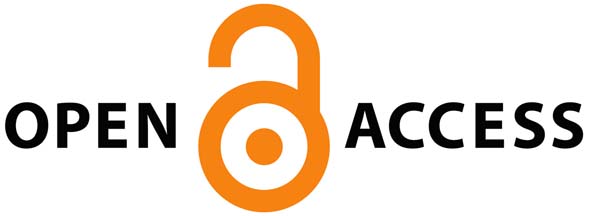| An interesting case of refractory hypotension and noncardiogenic pulmonary edema after amlodipine overdose | |
| DOI: 10.5606/e-cvsi.2024.1717 | |
| İhsan Alur1, Gökhan Peker2, Taner Taşyüz2, Ahmet Deniz Kaya3, Osman Kaya4 | |
|
1Department of Cardiovascular Surgery, Private Egekent Hospital, Denizli, Türkiye 2Department of Anesthesiology and Reanimation, Private Egekent Hospital, Denizli, Türkiye 3Department of Cardiovascular Surgery, Ministry of Health, Bursa Yüksek İhtisas Training and Research Hospital, Bursa, Türkiye 4Department of Anesthesiology and Reanimation, Ministry of Health, Nizip State Hospital, Gaziantep, Türkiye |
|
| Keywords: Amlodipine, hemodialysis, hemofiltration, intoxication, overdoze, ultrafiltration | |
Amlodipine is a dihydropyridine calcium channel blocker that acts on intravascular L-type calcium channels. It is most effective
on vascular smooth muscle cells and has little effect on cardiac tissue. Its most common use is hypertension, angina, arrhythmias,
subarachnoid hemorrhage, migraine, and Raynaud's disease. Amlodipine is preferred because it is used once a day and has minimal side
effects on heart rate. However, in case of acute overdose, either accidental or deliberate (e.g., suicide attempts), dangerous side effects
may occur and may result in death. Herein, we presented a 34-year-old male patient who ingested 90 tablets of amlodipine 10 mg and
was successfully treated. |
|
Amlodipine is a dihydropyridine calcium
channel blocker (CCB) that works on intravascular
L-type calcium channels. It is most effective on
vascular smooth muscle cells and has little impact
on cardiac tissue.[1] It is most commonly used
to treat hypertension and angina.[2] Amlodipine,
unlike other CCBs, has low metabolic clearance
and can be administered once daily to maintain an
almost constant plasma concentration.[2] However,
it has a lengthy half-life of 30 to 60 h and has
a protracted impact in acute overdose. It can
induce high plasma concentrations that can last
for days.[3] Hypotension, acidosis, decreased tissue
perfusion, respiratory arrest due to noncardiogenic
pulmonary edema, and mortality may ensue in
the event of intoxication due to vascular smooth
muscle relaxation.[1,2,4] The most frequent
therapeutic options for amlodipine acute overdose
include gastrointestinal decontamination, fluid
resuscitation, intravenous calcium, vasopressor
medications, atropine, high-dose insulin euglycemic
therapy, and pacemaker implantation.[1-4] Herein,
we presented a patient who ingested 90 tablets of
amlodipine 10 mg and was effectively treated. |
|
|
CASE PRESANTATION
|
|
A 34-year-old male patient stated taking
90 tablets of amlodipine 10 mg (900 mg in total)
over 40 min in an attempt to commit suicide. After
ingesting the tablets, he left his house and traveled
approximately 2,000 m before passing out. During
this time, he noted experiencing dizziness and his
pulse slowing down before passing out. The patient
was later discovered in a forest on the side of the
road and taken to the emergency department. He
was monitored at the hospital, and when the patient
developed hypotension and anuria 48 h after taking
the medications, he was transferred to our hospital
due to the absence of a dialysis unit. The patient
arrived with signs of pulmonary edema. He appeared anxious, restless, agitated, and dyspneic. It was noted
that the patient had no history of significant chronic
disease or psychiatric disorder and that this was his
first suicide attempt. The arterial blood pressure
was 80/50 mmHg, and the heart rate was 79 beats
per minute. The electrocardiogram revealed sinus
rhythm. Bedside transthoracic echocardiography
showed a left ventricular systolic function of 60%,
with no additional pathological findings. The
results of the arterial blood gas examination were
as follows: partial pressure of oxygen, 39.4 mmHg;
partial pressure of carbon dioxide, 38.1 mmHg;
oxygen saturation, 70%; hemoglobin, 11.1 g/dL;
hematocrit, 33%; lactate, 7.87 mmol/L; base excess,
–13.8 mmol/L. Biochemical analysis revealed a urea
of 78 mg/dL, creatinine of 2.44 mg/dL, and blood
glucose of 97 mg/dL. A written informed consent was
obtained from the patient. The patient was intubated.
Due to the hypotensive course, a norepinephrine
infusion at 0.4 mcg/kg/min was initiated. Dopamine
and dobutamine infusions at 0.5 mcg/kg/min were
initiated due to persistent hypotension. The time
required for gastrointestinal absorption had passed
by the time the patient arrived at the hospital, which
was 48 h after ingestion. Therefore, gastric lavage
was not performed. Computed tomography of the
thorax revealed bilateral lung infiltrates, a groundglass
appearance, and acute respiratory distress
syndrome (ARDS) (Figure 1a). Due to low arterial blood pressure, hourly urine output was insufficient;
hence, continuous venovenous hemodiafiltration was
performed at the bedside. Over six days, a total of 25 L
of fluid were taken from the patient. The patient's
refractory hypotension persisted for seven days. Later
on, respiratory parameters, along with arterial blood
pressure and arterial blood gas levels, began to
improve. Vasopressors were withdrawn on the eighth
day of hospitalization, starting with norepinephrine,
followed by dopamine. While oxygen saturation and
arterial blood pressure did not change significantly as
norepinephrine and dopamine doses were gradually
reduced, hemodynamics rapidly deteriorated and
oxygen saturation declined when dobutamine dosage
was reduced. As a result, dobutamine could only
be discontinued on the 12th day due to the patient’s
hypersensitivity. Furthermore, hourly urine output
increased, and venovenous hemodiafiltration was
discontinued. After regulated monitoring with
continuous positive airway pressure, the patient was
extubated on the 10th day of intubation. The ARDS
abnormalities were reported to have regressed in the
control thorax computed tomography (Figure 1b).
On the 13th day of hospitalization, the patient was
transferred from the intensive care unit to the general
ward. Vital signs were monitored. Arterial blood gas,
complete blood count, and biochemistry levels all
returned to normal. On the 19th day of his stay, the
patient was discharged. |
|
The patient arrived at our hospital 48 h after
ingesting the tablets, was extubated after 10 days
of intubation, recovered hemodynamically without
the need for extracorporeal membrane oxygenation
(ECMO), and was discharged, distinguishing this case
from similar reports in the literature. Calcium channels are present in numerous cells throughout the body, including cardiac myocytes, smooth muscle cells, and pancreatic b-cells. Calcium channel blockers inhibit calcium mobilization through each of these channels.[1] The effects of this vascular smooth muscle blockade comprise a drop in blood pressure, dilation of the coronary vascular system, and a decrease in afterload. Impaired inotropy emerges from calcium channel blockade in the cardiac muscles, and heart rate decreases owing to channel blockade in the sinoatrial and atrioventricular nodes.[1] Under normal physiological circumstances, amlodipine is selective for peripheral calcium channels. However, this selectivity is lost in acute overdose, leading to negative cardiac effects such as hypotension and bradycardia.[1] Inotropic support with isoproterenol is beneficial in the treatment of amlodipine-associated bradycardia.[5] Calcium administration and hemodynamic support with vasopressors and inotropes are standard treatments for amlodipine intoxication. Calcium is delivered at supratherapeutic levels as boluses or continuous infusions to overcome calcium channel antagonism.[1] Our patient did not have bradycardia, so isoproterenol was not started; however, intravenous bolus calcium replacement was initiated for its vasopressor effect. Due to peripheral vasodilation in patients with amlodipine overdose, maintaining intravascular volume balance is critical. Excessive fluid administration to an anuric patient may lead to pulmonary edema. Vasopressor support must be initiated concurrently with volume support.[1-3] In our case, the hypotension proved resistant to inotropic medications. With a maximum blood pressure of 80/50 mmHg, the patient was observed for seven days with high-dose inotropic support and intravenous volume replacement. Due to anuria, continuous venovenous hemodiafiltration was also used at the bedside. As a result, we tried to maintain the arterial blood pressure and avoid hypervolemia to prevent the recurrence of pulmonary edema. Subcutaneous insulin was used to control the patient's blood glucose levels. Patel et al.[6] emphasized that glucagon has an inotropic effect by activating the cardiovascular adenylate cycle and that glucagon therapy and hyperinsulinemia/euglycemia therapy may enhance the direct cardiotropic effect of insulin and improve cardiovascular carbohydrate oxidation, which is often impaired in these patients. Another treatment modality for lipid-soluble drug overdose is intravenous lipid infusions.[6] Since our patients was not hypoglycemic, we did not administer glucagon. An overdose of CCBs can be fatal, leading to noncardiogenic pulmonary edema and shock. Conventional therapy is insufficient for a severe CCBs overdose. The primary course of therapy for CCB overdose is supportive care, which includes fluid resuscitation. Since the mechanism underlying noncardiogenic pulmonary edema is unclear, mechanical ventilation is typically employed. In patients with severe poisoning, circulatory shock may not react to atropine, glucagon, or calcium, necessitating the use of vasopressors. For CCB poisoning, hyperinsulinemia/euglycemia therapy is preferable over other treatments because it actively transports glucose via insulin, counteracting the intracellular carbohydrate deficiency caused by CCBs. Although there is little use of intravenous lipid emulsion in treating lipophilic drug overdose, intravascular sequestration may enhance cardiac inotropy.[4] If oxygenation values do not improve despite intubation due to ARDS, ECMO support might be initiated. Extracorporeal membrane oxygenation has been shown to be effective until the lung parenchyma tissue recovers functionally.[4] In the study by Yusuke et al.,[7] a 46-year-old male patient intoxicated with 1,210 mg of amlodipine and 936 mg of candesartan was treated with vasopressors, calcium gluconate, and hyperinsulinemia/euglycemia therapy as an intubation and therapeutic protocol. However, the patient's hemodynamic condition deteriorated, and venoarterial ECMO support was initiated on the fifth day. The patient died on the 18th day. Initiating ECMO support earlier may have resulted in a better outcome. Although success was achieved in our case, it can be argued that ECMO support should be rapidly considered for poisoning with 1,000 mg or more.[7] In our case, ECMO support was not required because placing the patient in prone position improved oxygen saturation to roughly 80 to 90%, and respiratory parameters were adequate following intubation. One notable aspect of this case was the patient’s relative sensitivity to dobutamine compared to other vasopressor medications. Although there were no changes in oxygen saturation and arterial blood pressure during the progressive reduction of norepinephrine and dopamine doses, a rapid deterioration in hemodynamics was observed when the dobutamine dose was reduced. Additionally, arterial blood pressure began to decrease, and oxygen saturation dropped below 70%. Consequently, due to the patient’s hypersensitivity to dobutamine, it could only be terminated on the 12th day. In conclusion, the occurrence of refractory hypotension, leading to anuria and subsequent acute renal failure, is a significant issue in cases of amlodipine intoxication. In these patients, it is imperative to initiate vasopressor treatment in conjunction with volume support to rectify the blood pressure. Simultaneously, pulmonary edema may develop in these cases. In the event of the development of pulmonary edema, it is recommended to administer continuous venovenous hemodiafiltration, conventional hemodialysis, or ultrafiltration at the bedside while also ensuring careful monitoring of volume balance. Data Sharing Statement: The data that support the findings of this study are available from the corresponding author upon reasonable request. Author Contributions: Idea/concept, writing, control/ supervision: İ.A.; Design, data collection and/or processing: G.P.; Literature review: T.T.; Design/analysis and/or interpretation: A.D.K.; Data collection/design: O.K. Conflict of Interest: The authors declared no conflicts of interest with respect to the authorship and/or publication of this article. Funding: The authors received no financial support for the research and/or authorship of this article. |
|
1) Chudow M, Ferguson K. A case of severe, refractory
hypotension after amlodipine overdose. Cardiovasc Toxicol
2018;18:192-7. doi: 10.1007/s12012-017-9419-x.
2) Osman AF, Prasad RM, Marein S, O’Brien C. Multi-organ
dysfunction as a presentation of calcium channel blocker
intoxication. BMJ Case Rep 2022;15:e245711. doi: 10.1136/
bcr-2021-245711.
3) Jang DH, Nelson LS, Hoffman RS. Methylene blue in
the treatment of refractory shock from an amlodipine
overdose. Ann Emerg Med 2011;58:565-7. doi: 10.1016/j.
annemergmed.2011.02.025.
4) Siddiqi TA, Hill J, Huckleberry Y, Parthasarathy S. Noncardiogenic
pulmonary edema and life-threatening shock
due to calcium channel blocker overdose: A case report and
clinical review. Respir Care 2014;59:e15-21. doi: 10.4187/
respcare.02244.
5) Ebihara T, Morita M, Kawada M, Amano K, Kato F, Nakata
Y. Efficacy of isoproterenol for treating amlodipine overdose
resulting in bradycardia. Acute Med Surg 2017;4:353-7. doi:
10.1002/ams2.284.
|
|














